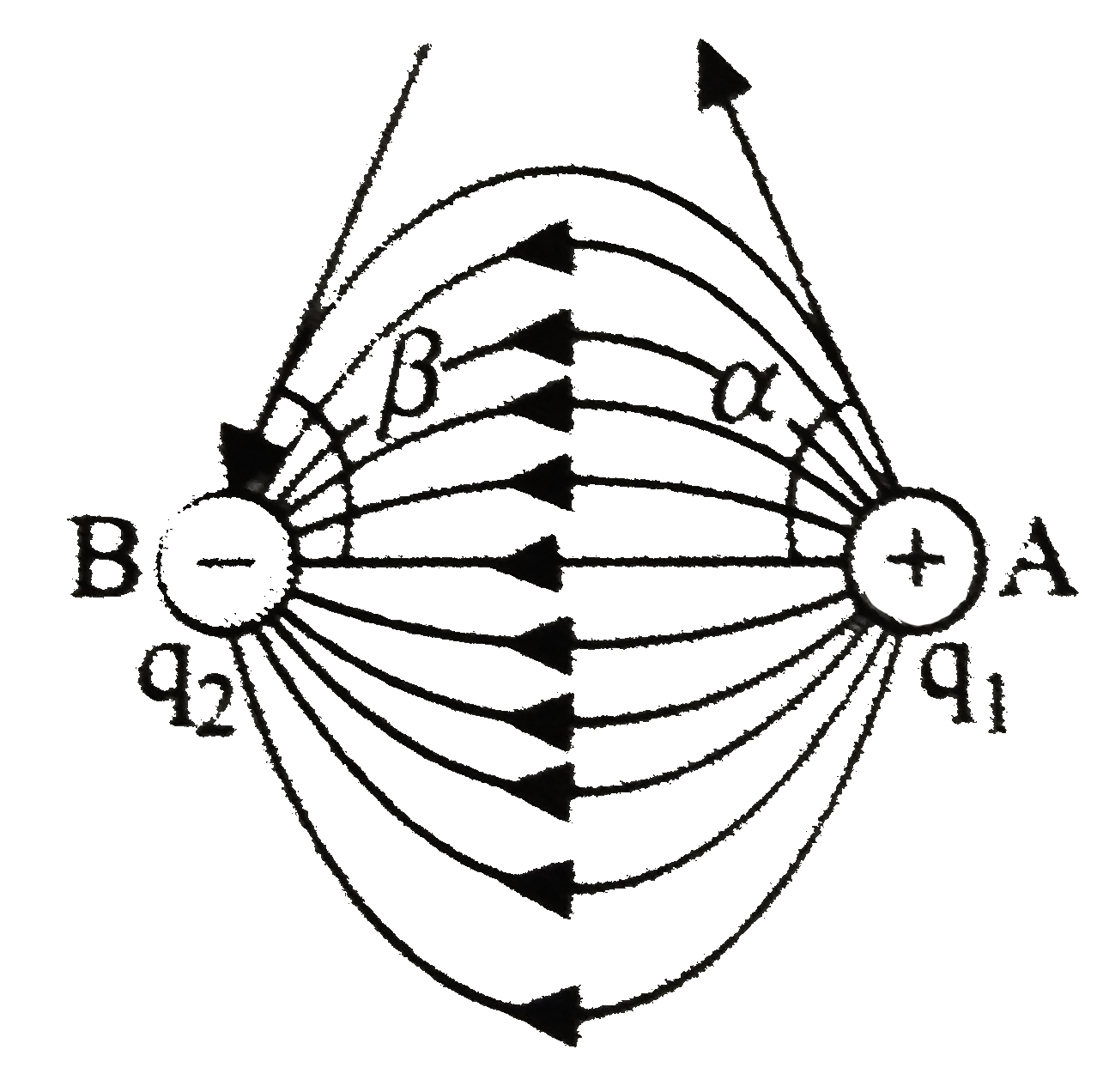Two charge Q1 and Q2 are placed at the points A and B having separation r lying inside and outside the unchanged conducting shell. The force on Q1 is F and that on Q2 is f.Then
F=0
F=14πε0Q1Q2r2
f=14πε0Q1Q2r2
f=0
The correct Answer is:A,C
Use Coulomb's law
Topper's Solved these Questions
- ELECTROSTATICS AND GAUSS LAWBook:NARAYNAChapter:ELECTROSTATICS AND GAUSS LAWExercise:Passage I
Explore 3 Videos
- ELECTROSTATICS AND GAUSS LAWBook:NARAYNAChapter:ELECTROSTATICS AND GAUSS LAWExercise:Passage II
Explore 3 Videos
- ELECTROSTATICS AND GAUSS LAWBook:NARAYNAChapter:ELECTROSTATICS AND GAUSS LAWExercise:NCERT based Question
Explore 14 Videos
- ELECTROSTATIC POTENTIAL AND CAPACITANCEBook:NARAYNAChapter:ELECTROSTATIC POTENTIAL AND CAPACITANCEExercise:ADDITIONAL PROBLEMS
Explore 14 Videos
- EXPERIMENTAL PHYSICSBook:NARAYNAChapter:EXPERIMENTAL PHYSICSExercise:Comprehension type
Explore 6 Videos
Similar Questions
When two charges q1andq2 are kept at some distance apart, force acting between these charges is F. If a third change q3 is placed quite close to q3 is placed quite close to q2 what will happen to the force between q1andq2 ?
View SolutionTwo positive charges q1 and q2 are located at the points with redius vectors r1 and r2. Find a negative charge q3 and a radius vector r3 of the point at which it has to be placed for the force acting on each of the three charges to be equal to zero.
View Solution
Knowledge Check
Charges Q1 and Q2 lie inside and outside respectively of an uncharged conducting shell. Their separation is r.
(i) The force on Q1 is zero
(ii) The force on Q1 is k(Q1Q2r2)
(iii) The force on Q2 is k(Q1Q2r2)
(iv) The force on Q2 is zeroA(i),(iii)B(ii),(iii)C(ii),(iv)D(i),(iii)Assertion: Two charges q1 and q2 are placed at separation r. Then magnitude of the force on each charge is F.
Reason: Now a third charge q3 is placed near q1 and q2. Then force on q1 and q2 remains F.Aif both Assertion and Reason are true and the Reason is correct explanation of the Assertion.BIf both Assertion and Reason are true but Reason is not the correct explanation of the Assertion.Cif Assertion is true, but the Reason is false.Dif both Assertion and Reason are falseTwo points charge q1 and q2(=q1/2) are placed at points A(0,1) and B(1,0) as shown in the figure.The electric field vector at point P(1,1) makes an angle q with the x-axis ,then the angle q is
 Atan−1(12)Btan−1(14)Ctan−1(1)Dtan−1(0)
Atan−1(12)Btan−1(14)Ctan−1(1)Dtan−1(0)
Two charges+q1 and −q2 are placed at A and B respectively. A line of force emanates from q1 at an angle α with the line AB. At what angle will it terminate at −q2 ?

View SolutionA charge Q located at a point →r is in equilibrium under the combined field of three charges q1,q2 and q3. If the charges q1 and q2 are located at point →r1 and →r2 respectively, find the direction of the force on Q due to q3 in terms of q1,(q2),→r1→r2, and →r.
View SolutionTwo points charges Q1 and Q2 placed at separation d in vacuum and force acting between them is F. Now a dielectric slab of thickness d/2 and dielectric constant K=4 is placed between them. The new force between the charges will be
View SolutionConsider a thin conducting shell of radius R carrying total charge Q. Two point charges Q and 2Q are placed on points A and B, which are at a distances of R2 and 2R from the center of the cell respectively as shown in the figure. If the cell is earthed how much charge will flow to the eart?

View SolutionTwo charge Q1=18μC and Q2=−2μC are separted by a distance R, and Q1 is on the left off Q2. The distance of the point where the net electric field is zero is
View Solution

